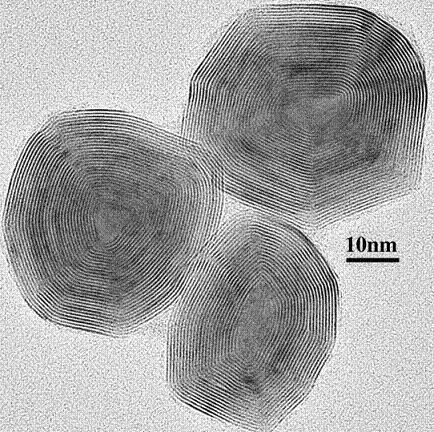Magnet pools operating under the chief scientist at TMT gather industrial companies, research bodies and others that develop systems that can later form a generic basis for the products of the companies participating in the pool and other companies in the field

The Magnet Committee, chaired by the Chief Scientist at the Ministry of Science and Technology, approved the establishment of 3 new associations with a total budget of NIS 48 million, which began operating these days. The associations represent the technological developments in the world, as well as the emphasis on promoting innovative applications. The new associations were added to older associations that continue in 2009 with a total budget of approximately NIS 180 million.
The three new associations are:
Nanotubes "Nanotubes Empowerment Solutions (NES)"
The discovery of polarenes, which earned its discoverers the Nobel Prize in Chemistry, created the basis for the development of nanotubes and a significant change in the world of materials. Nanotubes belong to a family of materials from the field of nanotechnology, built from hundreds of thousands to millions of carbon units, which form tubes with a nanometer diameter and a length of up to a millimeter. The introduction of nanotubes into existing materials results in a significant change in the properties of the materials such as: strength, color, conductivity, etc. However, the integration of nanotubes into existing materials to achieve these properties is not simple, and overcoming these barriers is the focus of the association's activity.
According to Ilan Peled, the director of Magnet, 13 companies from a variety of industrial applications are partners in this association, together with the best research groups in academia, to develop tools for the characterization and analysis of nanotube integrated materials, as well as applications in solid materials, liquids and the organization of structures into thin layers. The observed applications are in the fields of shielding, transparent materials, electrical electrodes, etc.
The association was established on the initiative of Rafi Koriat who partnered with the company "Kilo-Lambda" to lead it, and its partners are system houses such as "TAA", "Elbit", "Raphael", companies from the traditional industry such as "Hanita Kotlev", "Palsen Sasa", "Oren" Tzuba" and companies from the energy sector such as "Vulcan", "Al-Mul" and "G3 Solar".
The approved budget for the first year is approximately NIS 18 million.
Solar Energy Solutions (SES)
All over the world it is possible to notice accelerated growth in everything related to solar electricity production. The bottleneck was and remains - the high cost of production, while on the other hand, awareness of the quality of the environment and the strong desire to reduce dependence on oil generate many and varied R&D activities.
In recent years, the thermo-solar market has been developing, which Israel had a significant contribution to the development of - an extensive market for photovoltaic products. Israeli industry has an interest in being active in this important and developing market.
The members of the association, led by "Tower" and "Bright Source" (formerly Luz2) in collaboration with groups from the academy, identify two unique and ground-breaking niches. Color-sensitized photovoltaic cells intended for areas remote from a regular electricity grid and their products can be self-assembled, and an architectural application market (roofs and curtain walls) based on a significant reduction in the amount of silicon required per watt of electricity.
The members of the association will develop innovative materials to improve the efficiency and reduce the cost of thermo-solar systems. Photovoltaic cells have the advantage that they are efficient and cheap materials and methods to improve the optics in hybrid solar systems.
The approved budget for the first year is NIS 13 million.
NET-HD The next generation of the Internet - HDTV quality video in real time on the open Internet

The association's vision: within 5-7 years, all video content (movies, TV series, entertainment and cooking shows, reality shows, etc.) that exists in the world will be available and accessible via the Internet.
Similar to the cell phone revolution - availability everywhere - this revolution will also allow the availability of watching video content (and television) at any time.
We will no longer be dependent on the schedule dictated by the television channels, concepts like "the news broadcast at 20:00 p.m." will be replaced by the concept "tonight's news broadcast is available for viewing from 20:00 p.m."
The problem is that the existing Internet network is not built to handle video traffic on the required scale. The association will research and create technological solutions needed by the network operator to deal with the above challenges, will develop solutions that will meet the network's requirements without (physically) upgrading the existing infrastructures. Through advanced and innovative R&D, it will be possible to increase the width of the film at all levels at a low cost because it is not based on the existing physical infrastructure.
The association will concentrate on developing network technology for local network operators (such as Bezeq International) in order to reduce the external bandwidth required to satisfy the video requirements of end subscribers. The association's budget for the first year is approximately NIS 17 million.
According to Eyal Zafarir, Vice President of Technologies at Bezeq International, the research program will be based on Bezeq International's Internet network, which has the largest capacity and the highest number of links to international Internet providers.
Zafarir explains: The technology is constantly developing, the rates are increasing and increasing. We saw this in Bezeq's investment in the establishment of the NGN network. Broadcasting technology is also improving, and you can already see HD movies on YouTube. Take even a regular user who scripts the kids in HD and uploads to the web. You as a user would like to see it in the best possible quality. You need the means that will allow the film to reach you. There is no doubt that a single user trying to watch a HD movie on YouTube will succeed, but what will happen when 30-40 thousand people simultaneously try to watch a live BBC program in HD?"
However, Tzafir said, we also see that Israel is in a low place in the world in terms of bandwidth consumption. "There is no problem to increase capacities. But these are huge investments of tens of billions of dollars that no internet provider in the world can afford, because in the end the internet provider must provide availability at any time, anywhere in any form - via mobile, via computer and more. Therefore, we need to find ways to give the best quality. We will still have to significantly increase the bandwidth, but enough to give the highest quality."
According to Tzafrir, Bezeq International was invited to participate in the association and represent the face of the Internet providers in it by virtue of being the largest company over time, thanks to technology. "The entire association will operate on the basis of Bezeq International's network. In the end, the desires and requirements have to be translated into something tangible, as well as testing and the beginning of implementation... In addition to the fact that today in Bezeq International there are the people who founded the Internet infrastructure in Israel and there is a lot of knowledge within the company. The fact that Bezeq International is the only Internet company leading the project puts it in a different place from its competitors. The primacy effect. Once you learn it and experiment, your application is much higher quality and better. We will have a competitive advantage because the first application of the technology will be carried out on Bezeq International's infrastructure."
Dr. Eli Ofer, the chief scientist, points out that magnet clusters contribute, in addition to the technological wealth, also a direct contribution to employment. The bulk of the budget is intended for financing CA in the companies and at the subcontractor in Israel, and this activity generates additional employment for all the entities that provide direct services to the development groups and the companies active in the associations.
Ilan Peled, director of Magnet added that this year the companies are seeking to deepen and expand the research in order to be better prepared and ready for the day after the economic crisis and accordingly the volume of requests has increased.
Magnet's total budget currently stands at about 200 million shekels and increasing it will make it possible to respond to additional associations ready for activity and the full range of needs of the existing associations.

One response
It is actually interesting what the contribution of the magnets is, considering:
A. their small budget
B. The reluctance of the companies to reveal their unique developments.